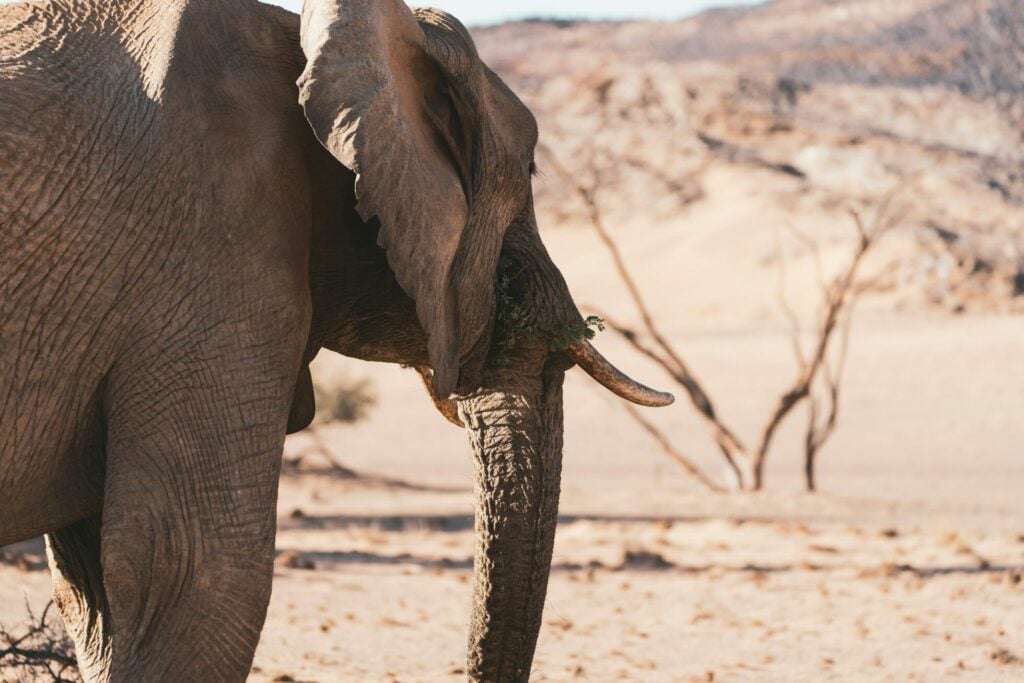Discover Raja Ampat, Indonesia's diving paradise in the Coral Triangle. Explore rich marine life, pristine waters and unique dive sites like Misool and Cape Kri.
GVI
Posted: July 10, 2024

GVI
Posted: July 9, 2024
The Namib Desert presents nature’s ultimate challenge zone, stretching along Namibia’s Atlantic coast with its raw beauty and extreme conditions. Amidst its towering dunes and sun-baked landscapes, a diverse range of wildlife has cleverly adapted to survive in this harsh environment.
Survival in the Namib Desert hinges on adaptations – physical, physiological and behavioural strategies that enable species to thrive despite limited water and extreme temperatures.
Behavioural adaptations play a crucial role in the survival of desert wildlife. For elephants in the Namib Desert, behavioural flexibility is key. They have adapted to be more nomadic, moving vast distances in search of water and vegetation. Their behaviour includes feeding at night when temperatures are cooler and conserving energy during the hottest parts of the day, behaviours that optimise their chances of survival in this harsh environment.
Plants in the Namib Desert have also evolved unique adaptations to thrive in arid conditions. Succulents like the welwitschia plant store water in their thick, fleshy leaves, while xerophytic plants have developed extensive root systems to access deep groundwater reserves.
Among the notable inhabitants of the Namib Desert are species uniquely adapted to its extremes. The welwitschia plant, characterised by its ancient appearance and ability to survive on minimal water, is a botanical wonder. The Namib Desert beetle collects moisture from fog by tilting its body to create a water-catching surface, an adaptation that ensures survival in one of the driest places on Earth. The sidewinder snake’s sideways movement minimises contact with hot sand, showcasing evolutionary adaptations honed over millennia in this challenging environment.
One of the most remarkable adaptations in the Namib Desert is observed in its elephant population. Desert elephants have uniquely adapted to their arid environment, roaming vast distances in search of water and vegetation. Their diets include a variety of desert-adapted plants, and they can survive on limited water sources for extended periods. These elephants have larger feet than their savannah counterparts, allowing them to traverse the sandy terrain more effectively. Their ability to thrive in such harsh conditions is a testament to nature’s resilience and adaptation.

The adaptations of desert wildlife in the Namib Desert showcase nature’s ability to thrive against all odds. From the resilient desert-adapted elephants to the hardy plants and elusive desert creatures, each adaptation tells a story of survival and evolution in one of Earth’s most extreme environments.
Despite their resilience, desert-adapted wildlife faces increasing challenges from human activities such as habitat fragmentation, climate change and poaching. Conservation efforts are critical to safeguarding these unique adaptations and preserving the delicate balance of desert ecosystems.
Join us in the heart of Namibia’s Damaraland, where desert elephants roam amidst one of the world’s last true wilderness areas. As a volunteer in our desert elephant conservation program, you’ll play a vital role in safeguarding these iconic creatures and fostering peaceful coexistence between elephants and local communities. Your efforts will include constructing protective barriers around vital water sources, tracking elephant movements, and assessing human-wildlife conflict risks with local farmers.
Experience the untouched beauty of Namibia’s desert landscapes. This volunteer program combines hands-on conservation work with unforgettable wildlife encounters, offering a rare opportunity to contribute to the protection of a unique ecosystem.
Discover Raja Ampat, Indonesia's diving paradise in the Coral Triangle. Explore rich marine life, pristine waters and unique dive sites like Misool and Cape Kri.
GVI
Posted: July 10, 2024